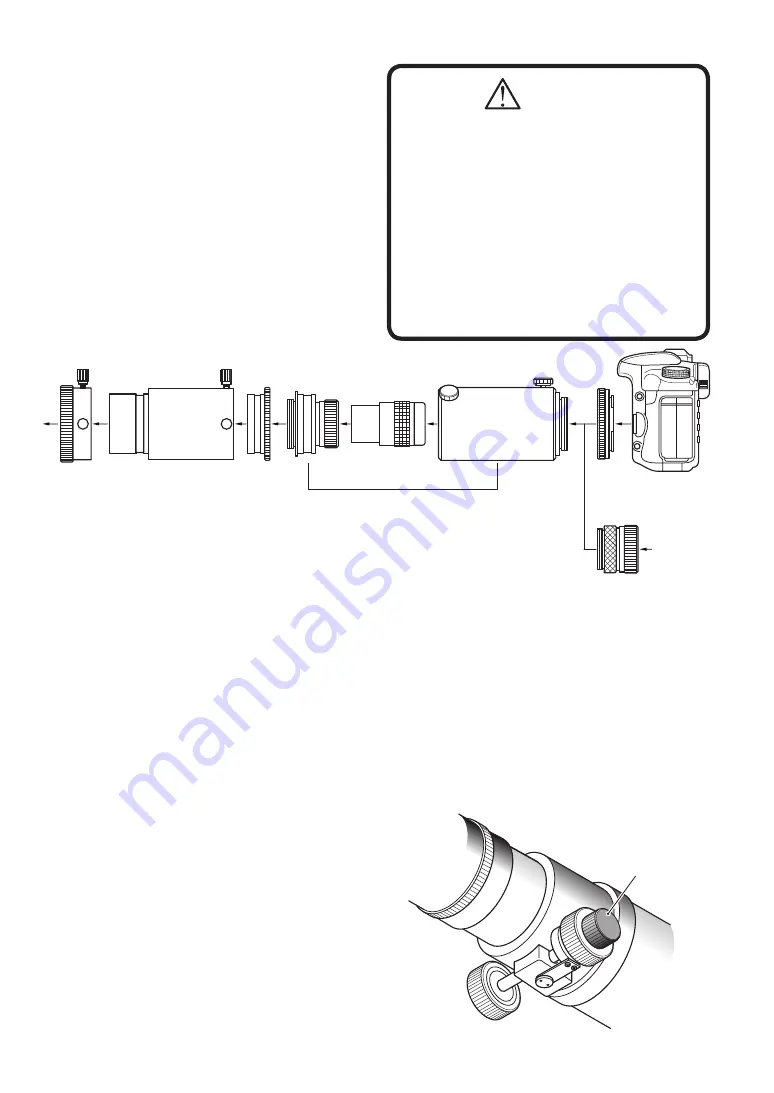
- 18 -
◆
TCA-4 Eyepiece Projection Device
This device allows the observer to change
observing mode simply and quickly from
visual to magnified mode.
You can easily change the eyepiece for
magnified imaging, and can also simply
adjust the magnifying rate, as you like, by
sliding the magnifying tube. You can use
any standard 31.7 (1¼”) eyepieces with this
device. To attach TCA-4 to a DSLR camera,
the T-Mount DX-S is used according to the
camera model.
Caution
When magnified imaging, the tube
assembly will be apt to be out of
balance. So, rebalance it according
to the instruction of the Takahashi
mounts. If the Dec. clamps are
loosened carelessly, the tube assembly
may turn abruptly and dangerously.
When the clamp must be loosened,
do so slowly and carefully, holding the
imaging package with one hand.
DSLR
Camera
TCA-4
T-mount
DX-S
50.8(2”) Extension Tube L
31.7(1¼”)
Eyepiece
50.8(2”) Adapter
(SKY90)
50.8(2”)
Sleeve
A PC camera or a CCD camera
with 31.7(1¼”) sleeve can be
attached to the TCA-4 with the
31.7(1¼”) eyepiece adapter.
◆
MEF-3
The Micro Edge Focuser, MEF-3, is an
optionally available fine focus attachment
that permits 8 to 1 focus for critical focusing
for imaging or highly magnified viewing.
◆
Cautions for Imaging
▼Sharp Image
Use a 3-4 magnitude star in order to achieve
sharpest focus of an image. Do trial shots
with a DSLR camera to determine the best
focus of the image. You can use the "live
view" function of the camera to focus on a
star.
▼Trial Shots
Before heading to a remote place to find
darker skies, it is recommended that you
take some trial shots in your backyard. Even
in the light polluted city area, you can take
images with an exposure of one minute
or so. This will allow you to confirm the
procedures that will achieve the sharpest
images for your equipment.
▼Guided Imaging
The quality of the image will depend on
guiding. Little or no guiding error in the
process of imaging will produce very sharp
images. Play or misalignment will ruin longer
exposures. Please use a very rigid guide
scope system for long exposure imaging.
MEF-3































